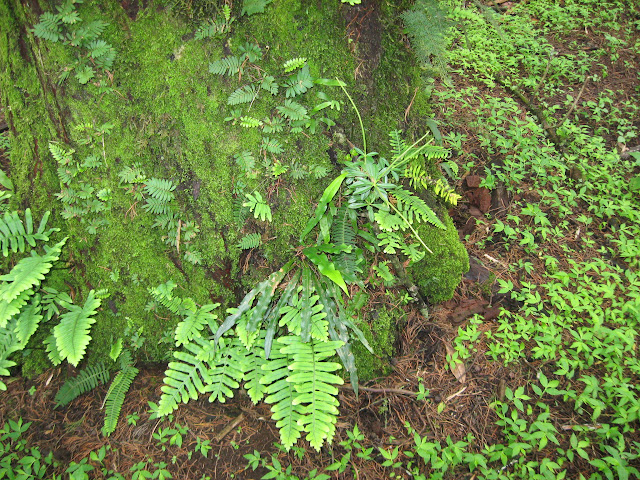The deciding factor was the time of year. It's December in the Midwest. There is very little of interest in December in Illinois. (Yes, there are bird migrations, and it is 50-ish degrees outside on the first official day of winter. I saw a fly outside earlier, too. Thanks, El Nino! No chance of a white Christmas, but we may be wearing shorts this year... It was colder in the cloud forest in Costa Rica than it will be here on Christmas. This is insane.) (UPDATE- This was followed by a similar warm Christmas the following year. Perhaps it's a common climate thing here, now.)
As a result, here is the first of several posts on Costa Rica. It was a mission trip from Cherry Hills Baptist Church in Springfield, Illinois. We spent most of the week around the capitol of San Jose. For more information on the trip itself, see CHBC Costa Rica Mission Trip. The blog is written by a friend of mine and it is excellent. I will warn you, I may have about two thousand pictures, but most of the nature that I saw I failed to photograph. Google Mimosa pudica, Sciurus variegatoides, and Pitangus sulphuratus and you will get some notion of what you are missing and what I failed to get pictures of. Many of these photos, particularly the next two, are shots taken by Dr. John R------.
 Soo... Let's get into this. We left from Chicago's O'Hare Airport having spent a wild night at the hotel the night before. We landed in San Jose, Costa Rica, pictured above. We then drove to Campamento Bautista in the hills between San Jose and Cartago. We had landed in the midst of the rainy season and thus clouds are present in nearly every shot. It rained every afternoon, sometimes heavily. This is why they call it a rainforest.
Soo... Let's get into this. We left from Chicago's O'Hare Airport having spent a wild night at the hotel the night before. We landed in San Jose, Costa Rica, pictured above. We then drove to Campamento Bautista in the hills between San Jose and Cartago. We had landed in the midst of the rainy season and thus clouds are present in nearly every shot. It rained every afternoon, sometimes heavily. This is why they call it a rainforest.The author of this post is pictured above. Oh no, security risk!
I should warn you that I had an abysmal, infernal, and blurry camera to work with, as well as a phone camera.
I also had no interest in getting any closer to the insect pictured above. A Tarantula Hawk Wasp (Pepsis or Hemipepsis spp.) is rumored to have the second most painful sting of any insect in the world. I saw an average of about one a day in Costa Rica, on the grassy slopes of the camp. Fortunately or unfortunately, there were no tarantulas. The female tarantula hawk wasp, in similar fashion to the cicada killers of the Midwest, catches tarantulas, stings them, and then lays its eggs in the still-living tarantula. The juvenile wasps then eat the tarantula when they hatch. Isn't nature so wonderful? All I know is that that wasp is about the same length as my hand, and that this picture was taken from at least twenty-five feet away.
The insect population in the area seemed about triple that of any late summer meadow in Illinois. Furthermore, every insect seemed bigger. I literally kicked a beetle that was dark red and resembled a june beetle out of the lodge on the first night after it had terrorized the people inside.
The camp itself was stunning, and the nearby hills made it even more beautiful, especially early in the morning after the sun had risen and the clouds had not settled in yet.
Even as second-growth forest, this area was still absolutely gorgeous. Below the camp at the base of the hill was a stony creek with a number of epiphytes and orchids nearby. Thanks to my camera's mishaps, I failed to get many pictures in this area that actually resembled anything that had been photographed.
This was one of the best I took in that valley. Ferns, orchids, clubmosses, liverworts, Peperomia, saplings and even a cactus or two grew on the branches of the trees, all the way down to the base of the trees. The small ferns are Polypodium, the plant with the long green flower clusters in the center is a Peperomia and the rest are generally unknown.

I was amazed at the biodiversity of the area, despite its location. It was also remarkably free of trash when compared to similar sites in Illinois. Most of the trash dumps I saw in Costa Rica were in town and near roadways that were already polluted.
Going back uphill, I spotted Mimosa pudica. The darker green mounds in the lawn are this species. I leave it up to you to figure out why this plant is so special. Sensitive plant is the English common name of this plant, by the way. I also spotted an orchid that was reminiscent of a Malaxis, pictured below, in the laws of the hill. Orchids growing in a lawn is a new concept for me. I generally have to outfit an expedition to find any orchids in my area. If anyone knows what this is, please let me know,
I'll leave you with a tease for next post. If you know what kind of plant this is, you might see where I'm going. (Hint: It's an Old World native, and a substance made from this plant was once banned by the Catholic Church as witchcraft.) Merry Christmas!










No comments:
Post a Comment